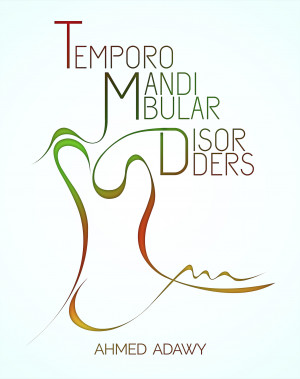
Temporo-Mandibular Disorders
On Sale
$2.00
$2.00
Despite extensive clinical research, temporomandibular disorders (TMD) remain a challenge. Controversies exist in the literature regarding the diagnosis and the management protocol for TMD. These disorders are patho-physiological conditions related to the masticatory muscles, temporomandibular joints or their associated structures and share main symptom expressions and clinical features. Symptoms commonly related to TMD are pain from the face and jaw area at rest or on function, jaw tiredness, TMJ sounds such as clicking or crepitation, jaw movement limitations and locking/catching or luxation of the mandible. Signs regarded as clinical indicators of TMD are tenderness upon palpation of the TMJs and the masticatory muscles, TMJ sounds and irregular paths of jaw movement, impaired jaw movement capacity and pain on jaw movement. Despite decades of research, a comprehensive etiological picture of TMD is still lacking. The variety of included conditions and the complexity of the masticatory system are reflected in the currently accepted multifactorial etiology. The balance between function and dysfunction or adaptation and maladaptation can be affected by a number of factors, such as external macro-trauma to the face, indirect trauma as in whiplash, or repeated micro-trauma, mostly related to oral parafunctions and psychosocial elements. These factors interact dynamically and can, in certain individual circumstances, act as predisposing or initiating elements, leading to the disturbed equilibrium and dysfunction of the masticatory system. Epidemiological studies have revealed that TMD symptoms and signs are very common in the population. It has been estimated that symptoms are reported by almost every third individual and 44–67% of the population present with clinical signs. Symptoms have more commonly been reported by younger and middle-aged individuals than by children or elderly persons with higher female predominance. In general, the three most common temporomandibular disorders are myofascial pain, internal derangement and osteoarthrosis. In fact, more than 50% of TMD is myofascial pain. Internal derangement is used to describe a temporomandibular disorder where there is an abnormal position of the articular disc. Osteoarthrosis is a localized degenerative disorder mainly affecting the articular cartilage of the mandibular condyle. Less common disorders are joint hypermobility and ankylosis of the TMJ. Rare disorders are hyper- and hypoplasia of the condyle. Diagnosing TMD requires a focused history and physical examination. Radiographic studies can also be used as supplemental diagnostic tools. According to several investigations, the majority of TMD patients, irrespective of the specific TMD diagnosis, achieve good relief of their symptoms with conservative therapy. The majority of TMD patients can be treated by general dental practitioners, but some patients who do not respond to this form of management need to be referred to and treated at specialized TMD clinics, where a multidisciplinary approach and treatment modalities are sometimes necessary.
The main aim of the present book is to provide the readers with an easily accessible text to face the complex and controversial issue of TMJ disorders with greater competence. I sincerely hope that this book will help to better understand TMJ disorders, diagnosis and management, and providing much needed clarity in an area filled with a great deal of misinformation and confusion. The text has been divided into 8 chapters. At first a description of TMJ anatomy, as well as the dynamics of the joint was given. Information regarding etiology and classifications were then presented. In the following chapters, the common, less common, and rare disorders were considered in detail.
The main aim of the present book is to provide the readers with an easily accessible text to face the complex and controversial issue of TMJ disorders with greater competence. I sincerely hope that this book will help to better understand TMJ disorders, diagnosis and management, and providing much needed clarity in an area filled with a great deal of misinformation and confusion. The text has been divided into 8 chapters. At first a description of TMJ anatomy, as well as the dynamics of the joint was given. Information regarding etiology and classifications were then presented. In the following chapters, the common, less common, and rare disorders were considered in detail.
